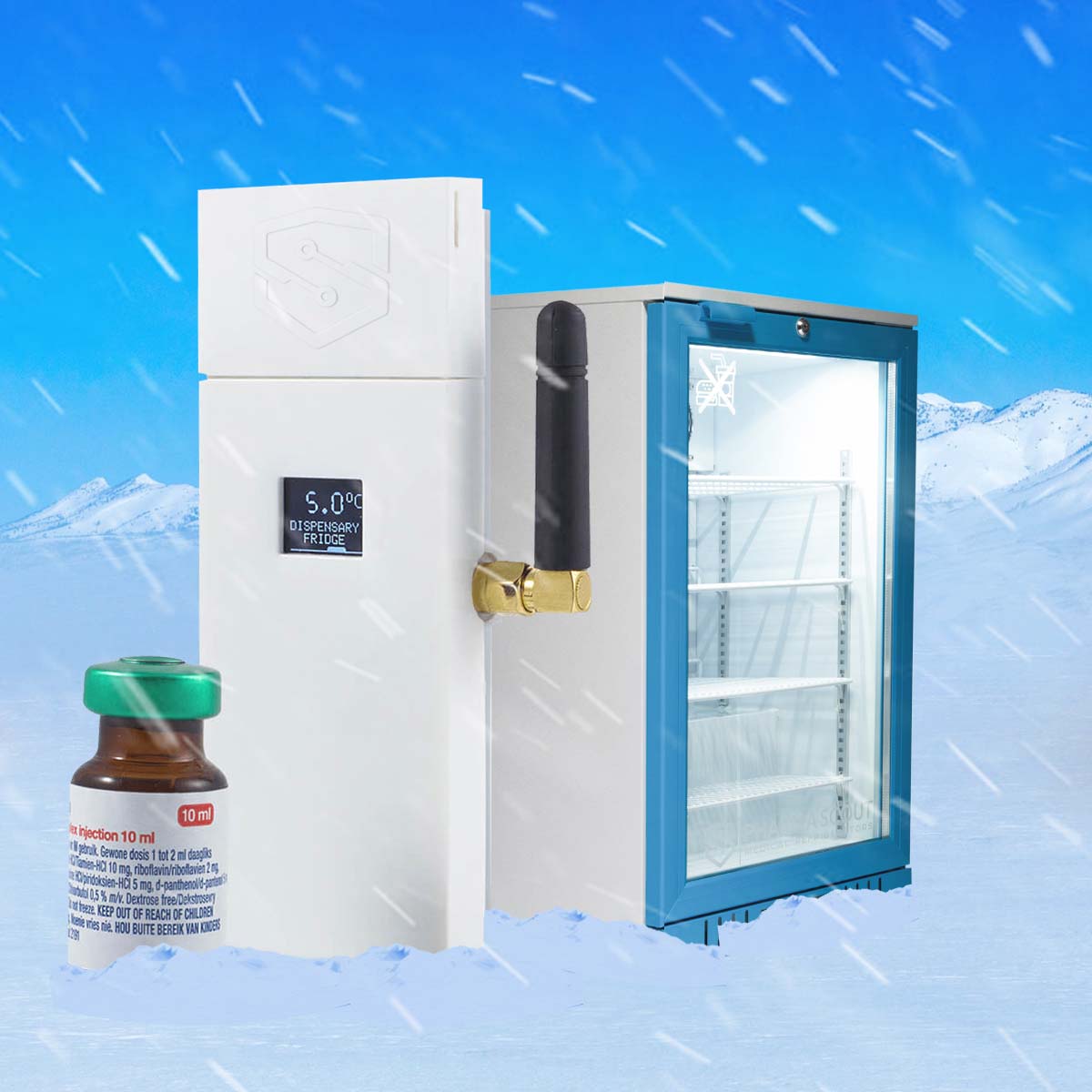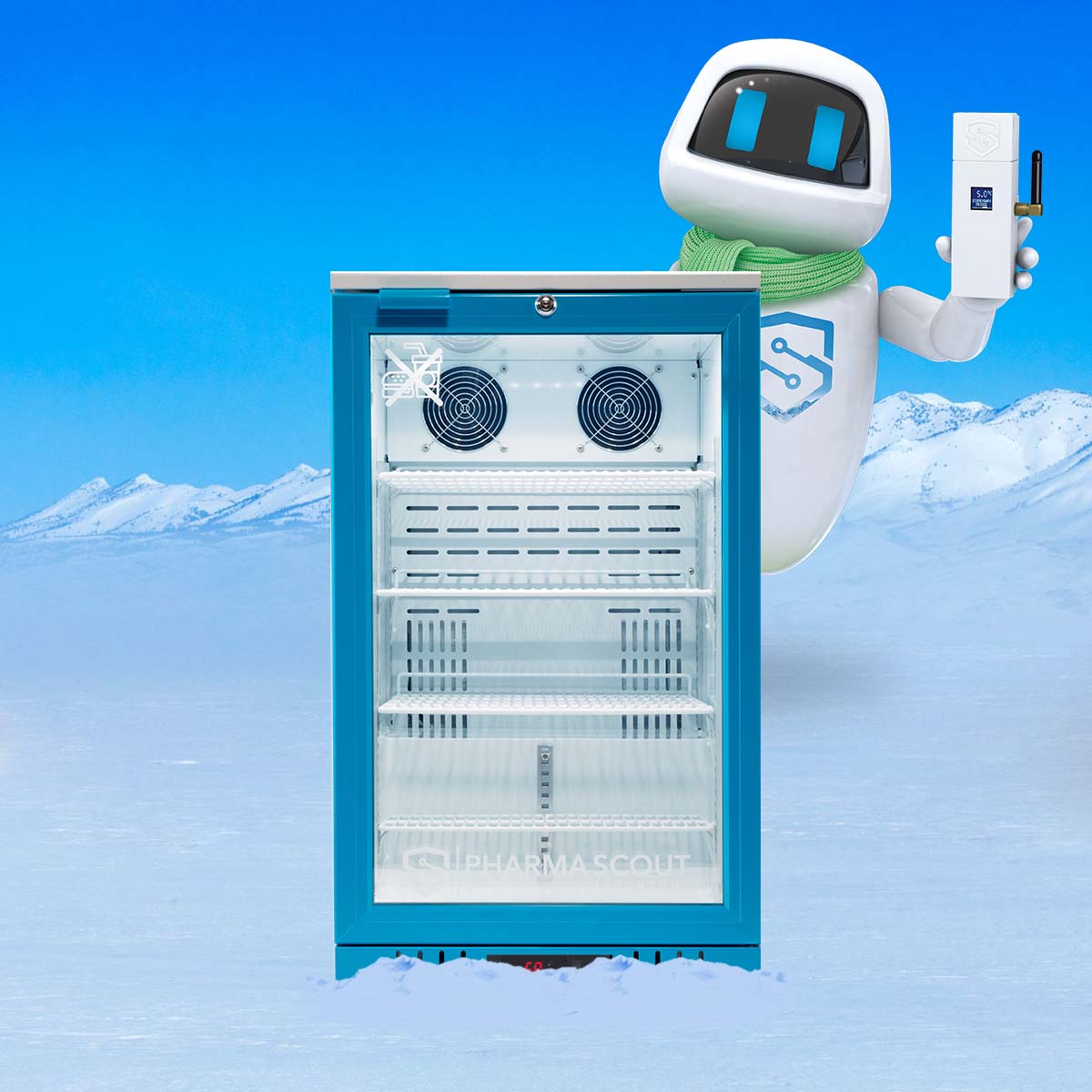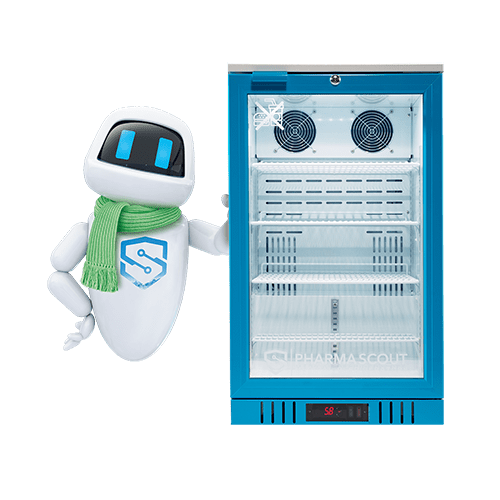Every perishable product is preserved by closely monitoring and regulating the ambient temperature throughout the entire supply chain journey. Break the chain and you break the product, but vaccines and certain other pharmaceuticals are unique in that it’s not always obvious when the integrity of the products have been compromised.
Sure, the shake test can show when vaccines have been frozen but other than that, there’s no sign, alarm or smell that shows up when pharmaceuticals have been exposed to heat. They simply stop working, or as those in the medical profession would say, the vaccine loses its potency.


Ensuring integrity
The only way to ensure integrity of vaccines and other sensitive pharmaceuticals is to closely monitor and regulate the ambient temperature from when it leaves the lab to when it’s administered.
There is something called a vaccine cold chain monitor card that measures the temperature and is activated by pulling a small tab on the indicator, but there is room for human error.
Technology has completely changed the game. Using temperature sensors and finely-tuned fridges, we can ensure that the temperature remains consistent and be alerted of any irregularities if it rises or drops outside of the set parameters – most vaccines, for example, prefer their environment somewhere between 2 and 8°C.
Think of the cold chain as a railway line where a vaccine or other sensitive pharmaceuticals have to travel from point A, the producer, to point B, the administrator. There are various stops at which the medicine has to change hands, and the more stops there are, the more risk there is of negligence. Importantly, calibrated fridges and sensors lessen the risk of heat or cold exposure.

Which types of medicines are transported?
Pharmaceuticals generally come in three forms, namely liquids, ointments and solids, each with its own refrigeration requirements. Some prefer a balmy 15°C while most pharmaceuticals require a temperature between 2 and 8°C. Transport can happen by air, sea or land, each mode with its own set of inherent challenges.
The World Health Organisation stipulates the following procedures for maintaining a reliable cold chain
- Store vaccines within the required temperature range at all sites
- Pack and transport vaccines according to recommended procedures
- Stick to the recommended cold chain conditions when doing immunisations
The WHO is very clear about not using domestic refrigerators in maintaining the cold chain, as these fridges are susceptible to power cuts and temperature fluctuations. There’s also no way to keep tabs on when these fluctuations occur, or the extent to which it does occur.
The Western Cape Department of Health noted in its cold chain manual obvious problems at each level of vaccine operations management. “It has become clear that these problems may be at clinic level, where in some cases the size of target populations are unknown, refrigeration is unsatisfactory, maintenance of equipment irregular or non-existent, gas cylinders are stolen or communication systems poor,” the report explained.
The researchers continue: “Conditions at the storage depots have not been ideal either, and limited studies have shown that during transport and storage, the cold chain is often broken. Wastage of vaccines is very often not recorded, whether avoidable or not, making accurate estimations and budgeting for vaccines problematic.”
The cold chain is obviously not perfect, but let’s consider each stop and look at best practices at each.

Manufacturer
Pharmaceuticals are manufactured in a tightly controlled laboratory environment and the products manufactured here must be transported under the same controlled conditions.

Freight
Retailers have the choice of shipping pharmaceuticals by air or sea, the latter being cheaper, but some pharmaceuticals have a short shelf-life and require speedy delivery. Transport by sea is not suited for biopharmaceuticals that are time and temperature sensitive.
When being loaded, these products often have to be repacked and sealed either in passive packaging or active packaging. Active packaging is essentially a refrigerator or some other machinery that actively impacts the ambient temperature, whereas passive packaging doesn’t regulate and adjust temperature.
Sensitive pharmaceuticals require constant temperature regulation by active containers. Generally, vaccines are particularly sensitive to freezing, even more so than heat exposure.
When it’s passed through customs, pharmaceuticals are distributed to a central centre, and from there to regional stores.

Health centre
From here, it’s passed into the more reliable hands of medical practitioners. The same regulations apply as to the other parts of the journey.
The golden thread throughout the cold chain is that vaccines and other temperature sensitive pharmaceuticals require specialised cooling equipment. While these fridges and sensors are initially more expensive than domestic refrigerators, the better insulation in these fridges means that the running costs are much less than that of domestic refrigerators in the long run.
To see how our range of Pharmascout fridges and monitoring solutions can ensure the potency of vaccines, click here. We offer integrated solutions for mapping, calibration and compliance. Our fridges are monitored remotely and all information is backed up to the cloud.





